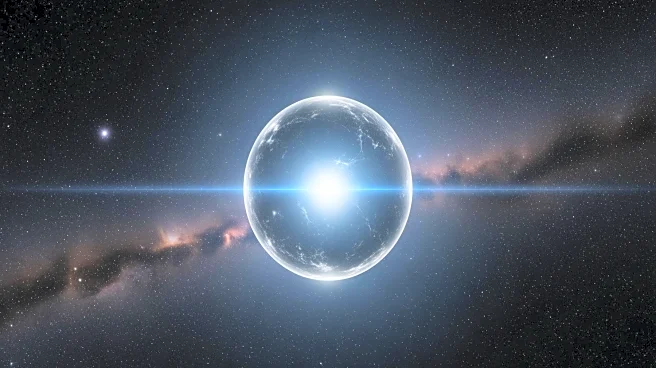What's Happening?
New simulations suggest that the mysterious gamma ray glow at the center of the Milky Way may be caused by dark matter collisions. Previously, the glow was thought to be from pulsars, but the shape of the glow matches the galactic bulge, leading to speculation
about dark matter. The study, published in Physical Review Letters, used supercomputers to simulate dark matter distribution, showing it could create the observed glow. This finding reopens the possibility that dark matter, rather than pulsars, is responsible for the gamma ray emissions.
Why It's Important?
If dark matter is confirmed as the source of the gamma ray glow, it would be a significant breakthrough in understanding this elusive substance, which is believed to make up a large portion of the universe's mass. The discovery could validate the existence of Weakly Interacting Massive Particles (WIMPs), a leading dark matter candidate. This would have profound implications for physics, potentially solving a major cosmic mystery and guiding future research in particle physics and cosmology.
What's Next?
The Cherenkov Telescope Array Observatory, set to begin operations in 2027, will provide higher resolution data to confirm the link between dark matter and the gamma ray glow. If confirmed, this would support the WIMP hypothesis and advance our understanding of dark matter. Alternatively, if dark matter is not linked to the glow, scientists will need to explore other explanations, keeping the search for dark matter open.















